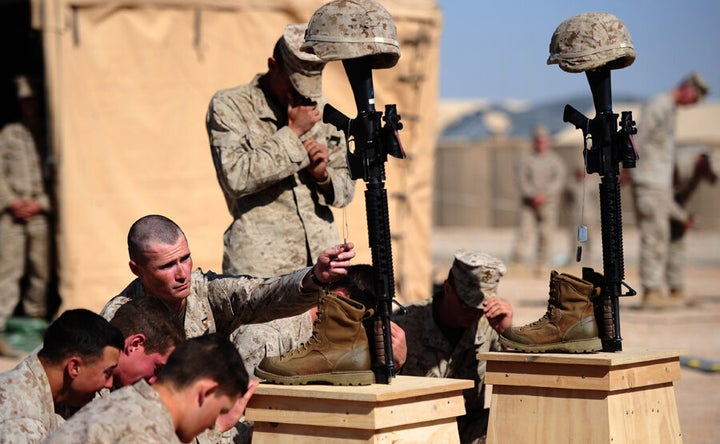
A suicide bomb attack in Kabul overnight claimed the lives of 18 people, including five U.S. servicemen. This attack pushed the war effort in Afghanistan past one of those grim milestones. Per today's New York Times:
On Tuesday, the toll of American dead in Afghanistan passed 1,000, after a suicide bomb in Kabul killed at least five United States service members. Having taken nearly seven years to reach the first 500 dead, the war killed the second 500 in fewer than two. A resurgent Taliban active in almost every province, a weak central government incapable of protecting its people and a larger number of American troops in harms way all contributed to the accelerating pace of death.
This grim occasion -- and the Times noting of the acceleration in U.S. deaths -- reminds me that I'm often left with the impression that most observers regard counterinsurgency as a "soft" form of military engagement, more public relations than warmaking. This isn't the case. The strategy actually demands that countersurgent forces accept greater risks. Here's the relevant material from the U.S. Army/Marine Corps Counterinsurgency Field Manual.
The More You Protect Your Force, The Less Secure You Are
1-124. Ultimate success in COIN is gained by protecting the populace, not the COIN force. If military forces stay locked up in compounds, they lose touch with the people, appear to be running scared, and cede the initiative to the insurgents. Patrols must be conducted, risk must be shared, and contact maintained. This ensures access to the intelligence needed to drive operations and reinforces the connections with the people that establish real legitimacy.
The More Force Used, the Less Effective It Is
1-125. Any use of force produces many effects, not all of which can be foreseen. The more force applied, the greater the chance of collateral damage and mistakes. It also increases the opportunity for insurgent propaganda to portray lethal military activities as brutal. The precise and discriminate use of force also strengthens the rule of law that needs to be established.
The More Successful COIN is, the Less Force That Can be Used and the More Risk That Must be Accepted
1-126. This is really a corollary to the previous paradox. As the level of insurgent violence drops, the requirements of international law and the expectations of the populace allow less use of military actions by the counterinsurgent. More reliance is placed on police work. Rules of engagement get stricter, and troops have to exercise increased restraint. Soldiers and Marines may also have to accept more risk to maintain involvement with the people.
Just something to keep in mind.
UPDATE: The folks at BraveNewFilms pass along this video:
[Would you like to follow me on Twitter? Because why not? Also, please send tips to tv@huffingtonpost.com -- learn more about our media monitoring project here.]
